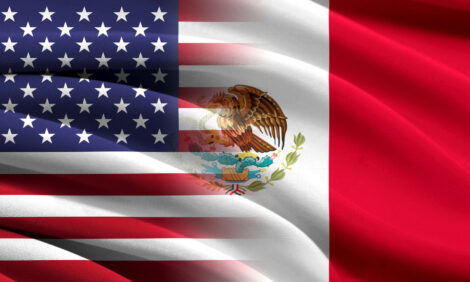



How Much Corn Is There Going To Be?
CANADA - Jim Long's Weekly Pork Commentary this week looks at feed costs, and their effect on the profitability of the industry Jim Long President, Baconmaker Genetics / Wood Lynn Farms, Inc. |
We do not pretend to have any knowledge of the workings of the grain market. But any time record crops are being projected we have to take note because the implication to the hog and livestock industry is major.
This year's corn crop projection of 10.27 billion bushels exceeds last year's corn crop by over a billion bushels. Last year there was just over 9 billion bushels of corn produced in the U.S. Even more startling , some forecasters think the USDA projection of 142.7 bu/acre this year is too low.
There are some suggestions that (barring a major dry spell) we could have a national corn yield average of over 150 bu/acre and overall production just short of 11 billion bushels. This could be the plausible result of the weather we've been having and current cropping methods that include better herbicides, better hybrid seeds and precision fertilization. Even though there has been increased usage of corn for ethanol production there is no way it could utilize anything close to this kind of increased corn production.
If the corn crop comes close to 150 bu/acre interior corn could drop to $1.50/bu. That would be $0.75 to $1.00 cheaper than it is today. This would decrease the farrow-to-finish cost of hog production $7.50 to $10.00/hd. Likewise, the cost of poultry and cattle production would decrease.
In an industry that lost $8.00/hd (farrow to finish) over the last 5 years, a substantial decrease in feed ingredient costs will be positive for margins. The hog industry used to be driven by producers who grew their own corn and they were somewhat insulated from the effect of dramatic change in corn prices relative to hog prices. Today, well over 60% of all hogs are raised by producers who purchase their feed or feed ingredients. Consequently, the hog industry's bottom line is much more sensitive to feed ingredient costs like corn.
Sow Slaughter
During the 4 weeks in June sow slaughter averaged 64,000/week, a number we think indicates liquidation. The U.S. breeding herd historically declines during the June-September quarter. We find little indication of major new sow barn construction. We think the capacity for production continues to decline. Potentially lower hog production and lower feed costs are positive for the industry's profitability.
Feeder Pigs
We understand that in the last few weeks SEWs and feeder pigs have been hard to move. Part of it is seasonal. Supply is always higher this time of year. Oct-Nov-Dec are the high volume slaughter months. Currently, 45-lb feeder pigs are scheduled to be marketed on November 15. We expect the feeder pig market will begin to improve over the next few weeks. One veteran feeder pig marketer told us that he expects SEWs and feeder pigs destined for the summer months of 2004 will reach record high prices due to lower supply and competitive feed prices.
Mad Cow (BSE) Update
Last week Canada banned the use of cattle brains and spines in animal feed (the likely source of BSE). Also a week ago, Canada's government threatened to close the border to U.S. beef in retaliation to the U.S. border being closed to imports of Canadian cattle and beef due to mad cow. Canadian politicians might as well bring a knife to a gunfight, as futile as their threat was.
A couple of years ago the U.S. stopped potato imports from Canada for almost a year because some sort of blight was found in one field in Canada. Heck, this over a blight that didn't even threaten humans like mad cow does. Since total Canadian exports to the U.S. are far greater than imports, a trade war would be suicide for Canada.
Weekly Canadian cattle slaughter has been running less than half of a year ago since May 20. What's interesting is that carcass slaughter weights are 815 lbs the week ending June 29 vs 811 lbs the same week a year ago. You could wonder why weights are not significantly higher if fed cattle are backing up.
Canadian fed cattle are bringing $500/hd less than in the U.S.and the unfortunate Canadian taxpayer is pretty much making up the difference. That's because the Canadian government has committed to make up most of the difference to the cattle producer. One of the effects of this program is that cattle packers in Canada can bid low prices knowing that the price difference will be made up by the government. Likewise, cattle producers know this, too.
Unfortunately for Canada's livestock producers, the longer the border stays closed the more magnified the implications become for Canada's pork and cattle industries. Canada exports 45% of its pork and 70% of its beef. A border that can be closed by one cow, in one herd, on one farm is not a foundation on which to build business plans. Let's hope common sense can prevail.
| Published with permission from |
Information provided by |
Source: Jim Long, www.baconmaker.com. Reproduced courtesy Farms.com - 14th July 2003








